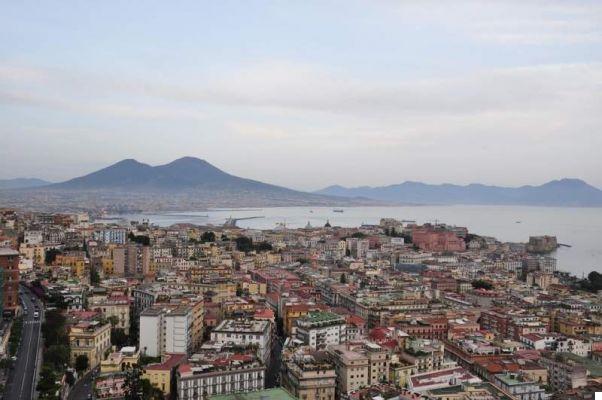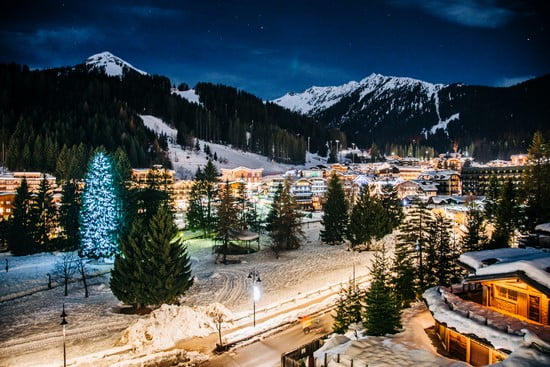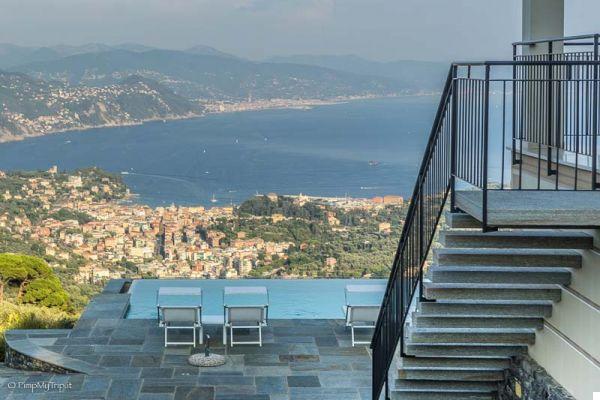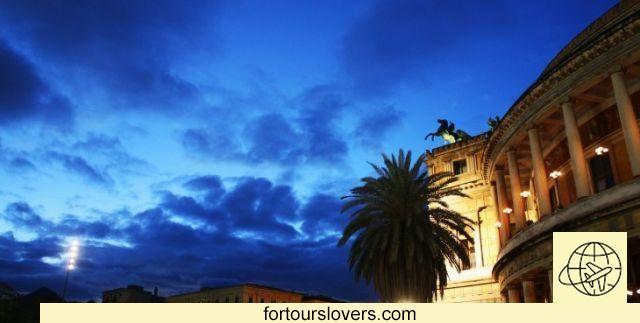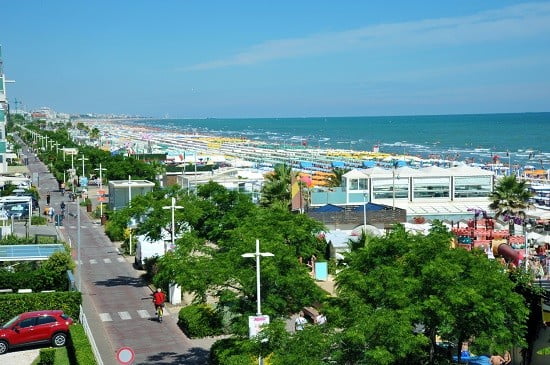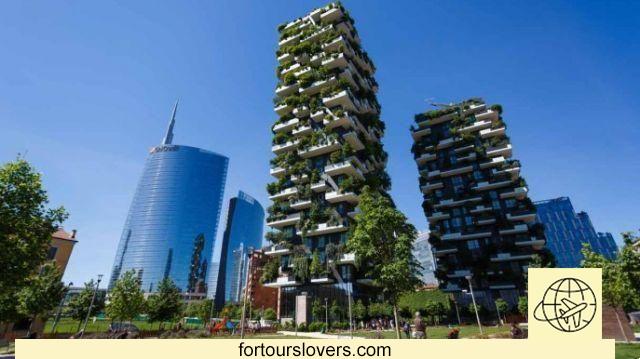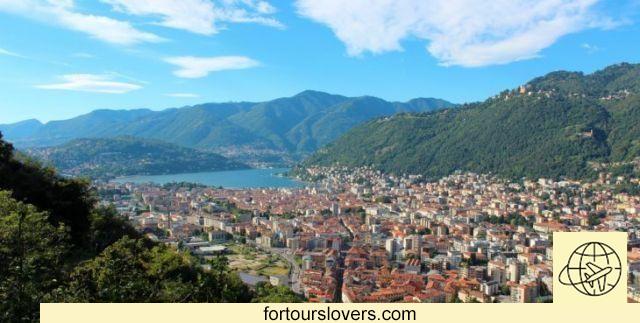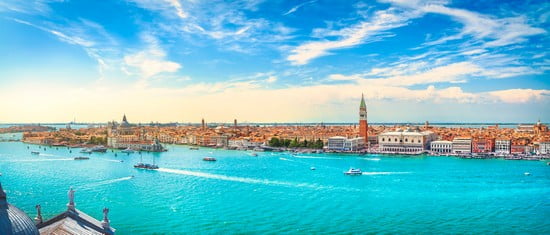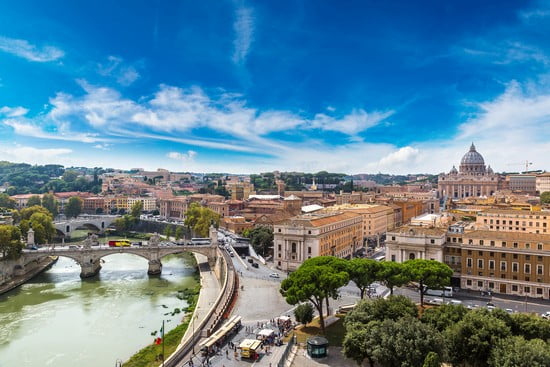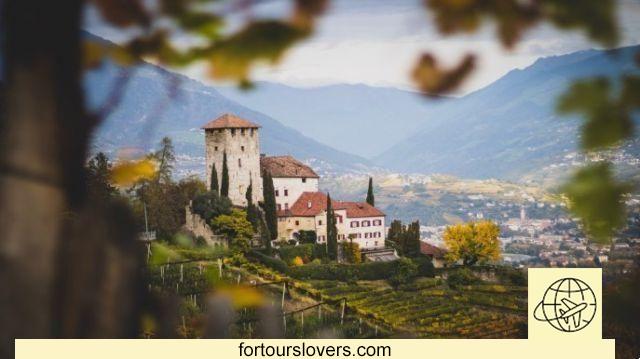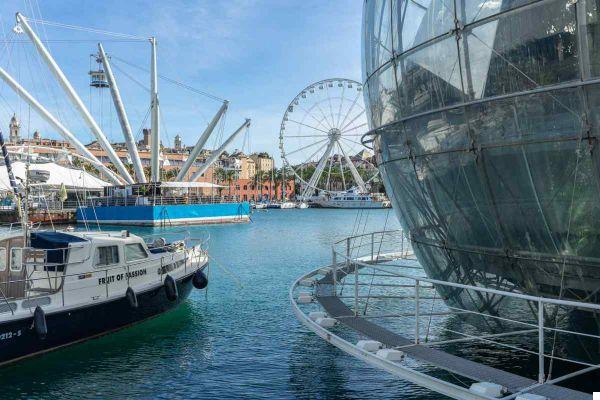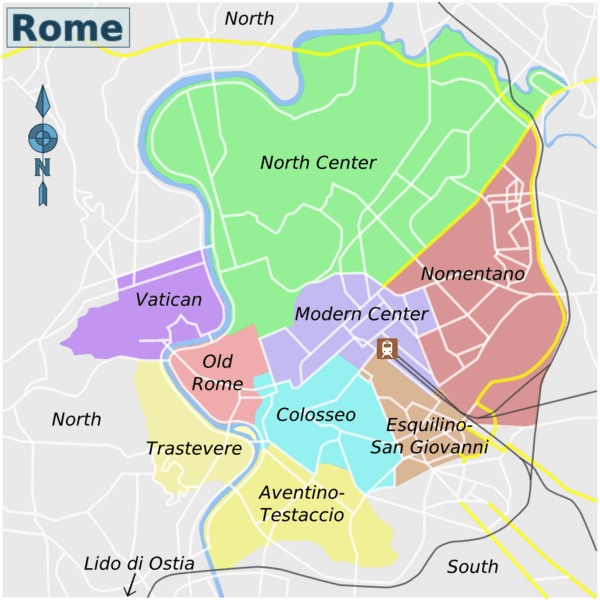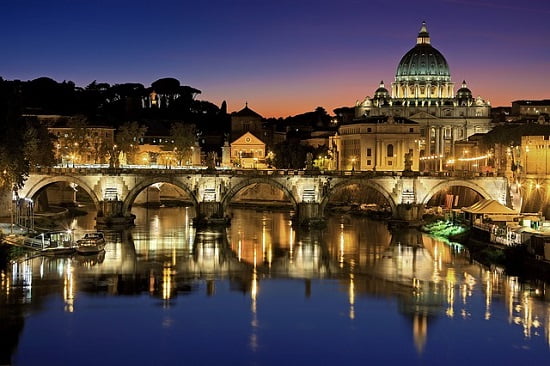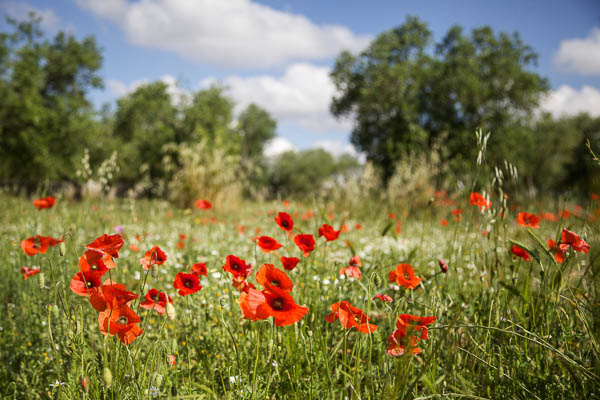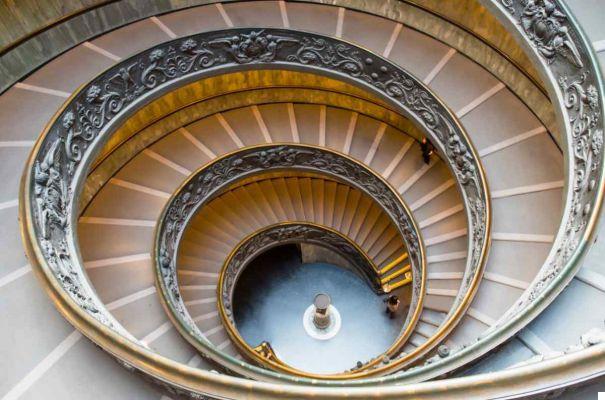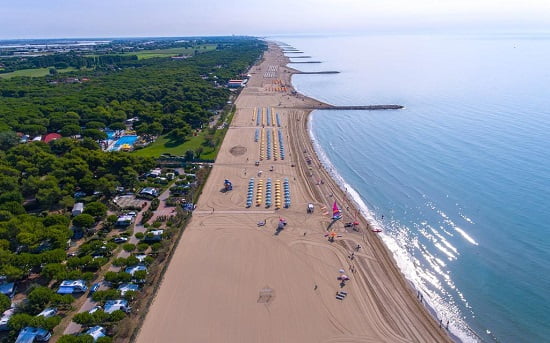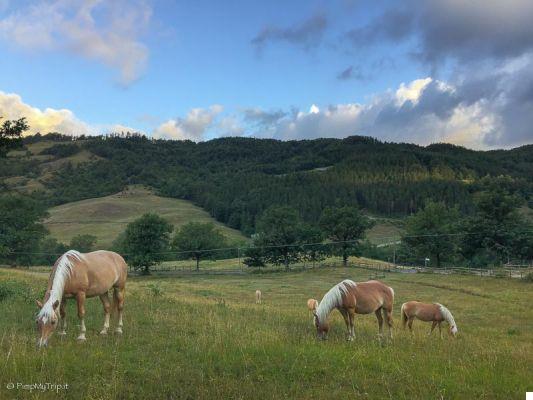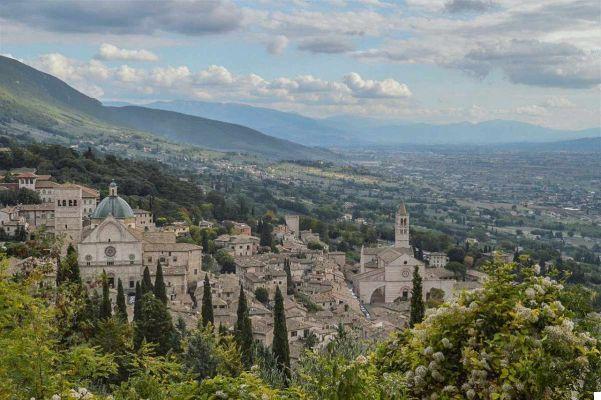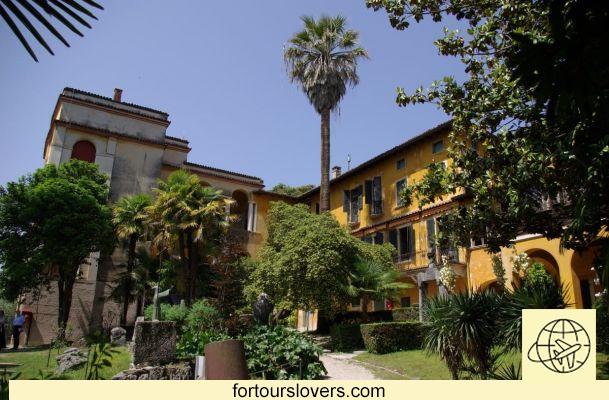
The charm of the Vittoriale degli Italiani
You may have attracted D'Annunzio's fame as "tombeur de femmes“, His worldly and chatty side, or having pushed you the passion for history and literature. Or it could have been simply word of mouth that brought you to the old Gardone.
The Vittoriale degli Italiani is said to be a place only, inimitable, and this is it: where has it ever happened to you to embark in a wood on a real ship moored in the trees, or to take off on a plane hanging from the ceiling? You may like this place or leave you perplexed, but you will never forget it.

What is the Vittoriale in Gardone Riviera?
The Vittoriale holds many realities at the same time. It is thelast resting place of a poet, a monument to the Victory of Italy in the Great War, a place where sacred and profane hold hands, a reliquary which preserves the memory of the fallen, a private cemetery where the beloved greyhounds rest not far from their master.
But not only. The Vittoriale degli Italiani is also an oasis of greenery overlooking the spectacular blue of Lake Garda, with the Borghese Island acting as a scenic backdrop. But to fully enjoy it, grasp its essence, you have to immerse yourself in the spirit of his "Magnificent inhabitant".
Curiosities about the Vittoriale and D'annunzio
We enter the citadel in silence, a terracotta figure who brings his index finger to his lips reminds us of it, walking down a path that climbs slightly. After a few steps, there is a crossroads. It is up to you to decide whether to continue downhill or uphill, whether to take the right or left. It will not be the only choice you will be called to make in this place that will leave an indelible mark on you.
In fact, you will come out of the Vittoriale with a new vigor, "not humble in the face of life but humble in the face of art”To use the words of poet D'Annunzio same.
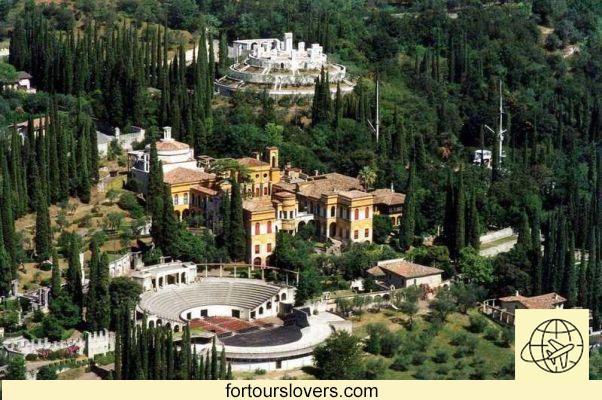
The origin of the name
You may have wondered the origin of the name Vittoriale degli Italiani.
The poet did not leave any precise indications and some were formulated hypothesis. Definitely the name makes it homage to the victory of Italy in the First World War, celebrating the genius and daring deeds of the soldier-poet. A strong analogy with the Vittoriano in Rome which celebrates the Father of the Fatherland, King Vittorio Emanuele II, and the entire Risorgimento season.
There is also talk ofinfluence of a chivalrous-themed book, entitled Victorial, which tells the life of a Spanish noble. The poet had read it during his stay in France and was fascinated by it, so much so that he had a copy in his library.
At the Vittoriale i references to the Great War they are multiple and touching. We find the Acqua del Piave, the Terra Fiumana, a bloody flag from a comrade in battle, the fragment of a grenade that missed its target, the boulders of the Karst, the mountains on which we fought. All sacred relics for D'Annunzio.
The noble coat of arms: a bit of history
In devising his noble coat of arms, the poet inserted a helmet it's a snowy peak, two obvious references to conflict. That peak, today in Slovenia, but once the extreme border between Italy and Yugoslavia, inspired the noble title "Prince of Montenevoso”Which he was awarded in 1924, when Fiume, today Rijeka and city of Croatia, was finally annexed to Italy. He who was not born a noble managed to raise his wife, born duchess, to the rank of princess.
His surname was not the same as his ancestors known as Rapagnetta instead. It was his father who had hired him from a maternal uncle, owner of fishing boats, who had adopted him.
I always like to highlight the happy union of his name and surname that he too loved to emphasize: Gabriel as the Archangel who announced to Mary that she would become a mother. The representations of the Annunciation scattered throughout the Priory are therefore a veiled tribute to the owner.

How to visit the Vittoriale degli Italiani
Where to start the visit and how long will it take?
The ideal would be to be able to stay in D'Annunzio's house a full day, with the possibility of having lunch in a restaurant in the village. But if you only have half a day available, it will be fine anyway, it will be enough to get an idea and promise to return. The “Santa Fabbrica” is vast and articulated, full of citations and subtle references. It is a constant challenge to our knowledge, the more we know, the more we see.
The construction of the complex kept the architect Giancarlo Maroni busy for several years, who was responsible for the "backbone", and the poet who reserved the "decoration" instead. A four-handed work thanks to which the original house "more suited to a country curate" was transformed into the complex that we admire today.
It was friends who had used that ironic expression to remark how the style of this simple construction was far from the splendor of the noble palaces inhabited by him until then. “Hic manebimus optime” (we'll be fine here) D'Annunzio said when he saw her. If the countless books left by the previous owner impressed him, the sight of the polished grand piano dazzled him. The mansion, once belonging to the art critic Heinrich Thode, kept inside that rare jewel that belonged to the great composer Listz. "I was born on the lap of music”He said about himself and reserved ample space for music in the Prioria, so he called his new residence. Visiting it, you will cross the “Camerata di Gasparo”, soundproofed with precious damasks, and in other rooms you will find the organs loved by the pianist Luisa Baccara, the poet's last companion.
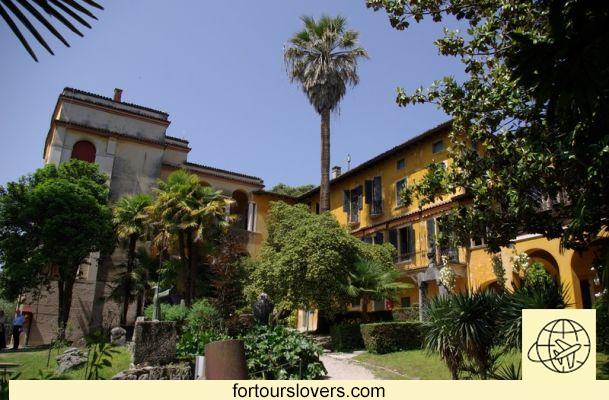
The Priory
The Prioria is certainly to be included in the program of visits to the Vittoriale degli Italiani. It will be an experience that I like to define as "mystical", with the leitmotif of the twilight and a single clear room, the workshop, in which D'Annunzio forged his works.
Writing was his job, he called himself "worker of the word”And the allusive presence of the anvil testifies to this. The Virgilian verse "hoc opus, hic labor est" (this is the work, this is the effort) is written on the outside to underline that no great enterprise is carried out without commitment and industriousness.
The entrance is tiny and low, you have to bow down to pass. Think of writing in the past, as well as an intellectual effort, it was also a great physical effort. Everything was composed by hand with a quill dipped in ink. No autocorrect, no copy and paste. D'Annunzio devoted himself incessantly to writing, from adolescence to old age. It was one of the most conspicuous sources of his income.
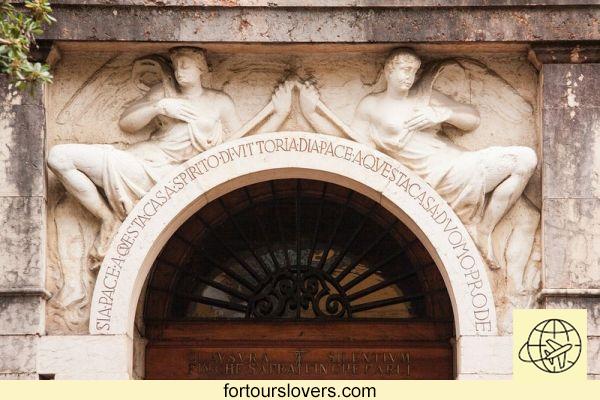
D'Annunzio: writing, successful works, women
Often visitors who visit the Vittoriale on Lake Garda wonder what miraculous spring D'Annunzio drew from to invest in such ambitious projects. First of all he wrote. He worked hard, many hours a day.
His works were winning great success, were printed and reprinted.
The edition of his Opera Omnia edited by Mondadori, it made him the astonishing sum of ten million lire. Even today it is difficult to imagine what this figure meant in 1926. He was undoubtedly a capable, fascinating, multifaceted man, a brilliant creative and many were the admirers who vied to pay homage to him.
And then… there were the women. He surrounded himself with aristocratic women, those of the high nobility with two or three surnames so to speak, all beautiful and very rich. We cannot say that he was handsome, nor that he had a cuirassier physique, but he knew how to speak to their hearts, conquered them with poetry, designed clothes for them that enhanced their femininity.
D'Annunzio he looked ahead, he was courageous, he knew how to shape the unimaginable, for many he was “The Commander”. The one who had "dared the inosable" in the Bay of Buccari, risking his life to sink Austrian submarines, that of the reckless Flight over Vienna to launch tricolor flyers, that of the Rijeka Regency. His great and risky exploits had the effect of raising the morale of the soldiers at the front and, at the end of the war, of maintaining the honor of the fatherland. "Memento Aude Semper", remember to always dare, is one of his most famous mottos.
Why the Vittoriale in Gardone Riviera?
After the First World War, considering the Italian victory unjustly mutilated on the eastern border, D'Annunzio, with a gesture of force hostile to the Italian government and the allies, disobeyed. He left feverishly for Fiume followed by his loyal legionaries and occupied it. The occupation, which lasted a little over a year, ended with the tragic "Natale di Sangue" in which the Italian occupiers were forcibly evicted by other Italians, the regular army troops.
It was then that D'Annunzio was forced to leave the palace of the governors on the hill of Fiume e looking for a new home. This time he wanted her away from the clamor, a secluded refuge in which to store the remains of her shipwrecks. He found it in Gardone Riviera, on Lake Garda. He initially rented it and then bought it. It was the only house he owned and he gave it to the Italians "considering it a testament of soul and stone". Here is therefore revealed the meaning of the curious motto "I have what I have given" found at the beginning of the visit and the name "Vittoriale degli Italiani".
The colors of the lake must have reminded him of those of the city of Rijeka, overlooking the Adriatic and once under Venetian rule just like the Garda Riviera. Here too the same clear blue of the Kvarner Gulf, the rarely impetuous wind, the play of light of that sea already loved in his native Pescara.
The wild life of the poet of the Vittoriale
He had already frequented Lake D'Annunzio at the time of the overwhelming passion for Alessandra Starabba di Rudinì. Alessandra, daughter of the then Prime Minister, lived in the Villa Carlotti di Garda inherited from her late husband, the Marquis Carlotti. It was an incredible scandal for her family, he was used to it. Already his marriage with Maria Hardouin of the Dukes of Gallese had caused an enormous sensation. It was Alessandra Starabba di Rudinì, nicknamed “Nike” for her statuesque beauty, who replaced the famous actress Eleonora Duse, companion of the writer's most fruitful years. But she too was soon abandoned and retired to a Carmelite convent. Women, women, women ... seduced and abandoned, fickle, capricious, friends, generous, an endless list.
'Sincorrigible playboy the car is also female. One day he wrote to Senator Giovanni Agnelli:
“The automobile is female. This has the grace, the slenderness, the vivacity of a seductress; moreover, it has a virtue unknown to women: perfect obedience. But, on the other hand, some women have the casual levity in overcoming any roughness "
And he obliged him. He owned several, some today are at the Vittoriale making a fine show of themselves. As an adventurous man, he loved to compete, experience the thrill of speed whether he was aboard a motorboat, an airplane or a car and by pressing on the accelerator, almost to emulate the drivers of the Mille Miglia, he collected several fines. He humorously called them the "new scourge". Who knows what the local fishermen and farmers thought of him when they saw him coming at full speed, leaving behind a cloud of dust… in that Gardone of the 30s, with dirt roads and full of holes.
Some advice to discover the Vittoriale
Now that you have approached the spirit of the place and its creator, you are ready to dive into the adventure. If you have half a day, I recommend you don't miss the Theater Priory, the gardens with the Puglia ship, Anti-submarine motorboat of the Beffa di Buccari, Mausoleum on the hill, the historical machines, the plane of the Flight over Vienna.
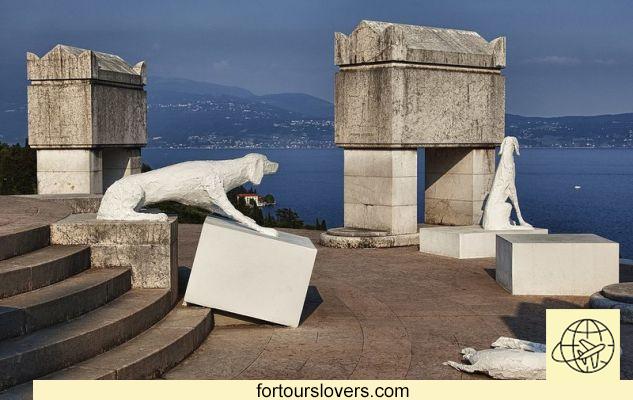
If, on the other hand, you can stay all day, also move towards the Arengario, the Portico del Parente and the rest of the gardens that from the Acqua Pazza valley lead down to the bottom of the Rivano Portal. The violin-shaped Pond of Dances will seal your visit with a musical reminder.
"I live and work, and make music, in the solitude of the Vittoriale and I dedicate to my walls the assiduous love that binds me to the pages of my new books"
Enjoy your visit! And if you want to be accompanied in this sensational discovery, contact me, I will gladly do it.





